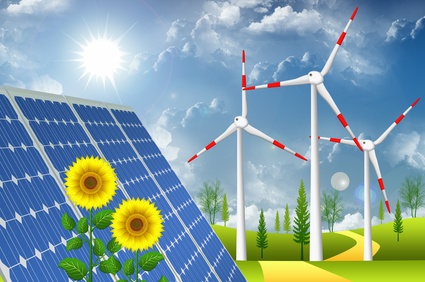We all know that electricity is a necessity and not a luxury—access to reliable, affordable power is the lifeblood of our economy. Our healthcare systems, commerce, our own homes and so much more depend on it. We need to treat California’s recent rolling blackouts as a call to action to build a 21st century renewable grid. The canary in the mine is chirping and while the outages cost $14 million in lost value, future outages could easily stretch into the billions or tens of billions.
The blackouts demonstrate the need to plan for a smooth transition to a renewable-based grid, and were not caused by the technical performance of renewables. California’s renewable fleet has been performing as expected for decades, and particularly throughout the pandemic. Recent studies have shown untapped potential for utility-scale wind and solar to provide additional reliability services for California’s system.
The Golden State has a well-earned reputation as a nationwide climate and clean energy leader, having set a goal to reach 100 percent clean energy for the world’s fifth largest economy. While California has no shortage of ambition, we see the need to plan for and build renewable energy capacity in order to to achieve such a bold target. Progress on the state’s clean energy transition has notably lacked in four areas: Regional resource sharing; developing new renewable generation; building new transmission; and recognizing the role that renewable energy can play in reliability.
A portfolio that pairs high-quality wind with California’s robust solar and storage resources is best-positioned to ensure the state hits its renewable targets, while making 2020 the last year of power shut-offs in a region otherwise known as a hub for technology and innovation.
Within California, a handful of transmission upgrades have been sitting in regulatory limbo – some for several years – that could unlock an additional 3 gigawatt (GW) of renewable capacity as early as 2021. State agencies need to work together to move these projects through their necessary reviews to bring renewable capacity online quickly.
In addition, greater connectivity between California and the broader Western region can play an important role in preventing blackouts. The Energy Imbalance Market, an effort at limited but critical coordination between California and its neighbors, has already saved Californians $230 million. More connectivity and coordination would also introduce all-important geographic diversity in power generation. While in-state gas plants tripped offline and wind production slowed, wind in New Mexico and Wyoming was roaring and could have mitigated the shortfall. And in Wyoming, for example, the wind blows strongest from 4-9 pm, which pairs perfectly with California’s strong solar resource.
Regional wind and solar projects are at the ready to meet California’s growing demand for renewable energy. Wind and solar resources across the West are ready, pending certainty there will be a buyer for their power. Already, 5.6 GW are under construction in New Mexico and Wyoming alone. Many of these resources can be up and running as soon as next summer. An expedited renewable procurement program that recognizes regional and technological diversity can solve the sorts of challenges that caused the state’s recent blackouts.
These regional renewable resources are also in the right place at the right time. In the coming decade, over 20 GW of conventional power plants will retire in the Western region, freeing up the transmission lines currently serving those plants to be repurposed for new renewable projects and carry power to California.
New transmission and more connectivity with states like Wyoming, Montana, and New Mexico that have powerful wind resources but relatively low electricity demand will provide the cost-effective pathway for making tangible progress on a 100 percent clean target.
While building new transmission can be a lengthy process, now is the time to start planning and permitting lines to access renewable-rich resource areas throughout the west and off California’s coast. Given growing demand for clean energy in the West, with a swell of 100 percent clean energy laws implemented in nine states over the past three years, new transmission will make the Western grid more affordable, reliable, and resilient. Studies routinely show new lines more than pay for themselves. For example, grid operators SPP and MISO, which combined manage the grid in all or parts of 29 states, found recent transmission upgrades created benefits between 2.2 and 3.5 times greater than their costs.
Building offshore wind, which can harness the constant, strong wind blowing about 25 miles off California’s coastline will provide an important complement to transmission buildout and onshore procurement. Offshore wind will boost resilience by diversifying the resource mix, growing a global clean energy industry, and providing reliable electricity to the power-hungry population centers along California’s coastline.
Finally, California’s market needs to better recognize the characteristics of renewable generation. Recent studies from the CAISO and renewable energy operators demonstrated that both utility-scale wind and solar can provide the same ancillary services that conventional generation currently offers. By recognizing and planning for these capabilities, California can achieve its objectives for reliability, affordability, and decarbonization.
California has an ambitious clean energy goal, and the technology already exists to meet it. Whether or not the state hits its future targets will depend on the actions today’s leaders take. Governor Newsom and his team of experts can learn from the missed opportunities of the past and take decisive action today to drive California toward a clean energy future.


